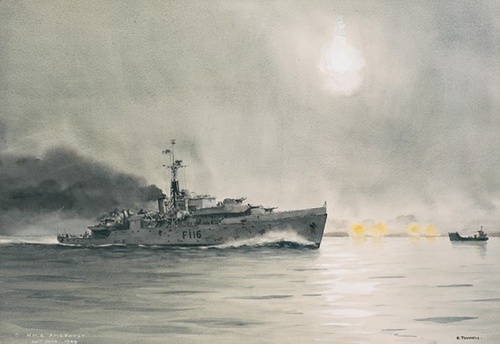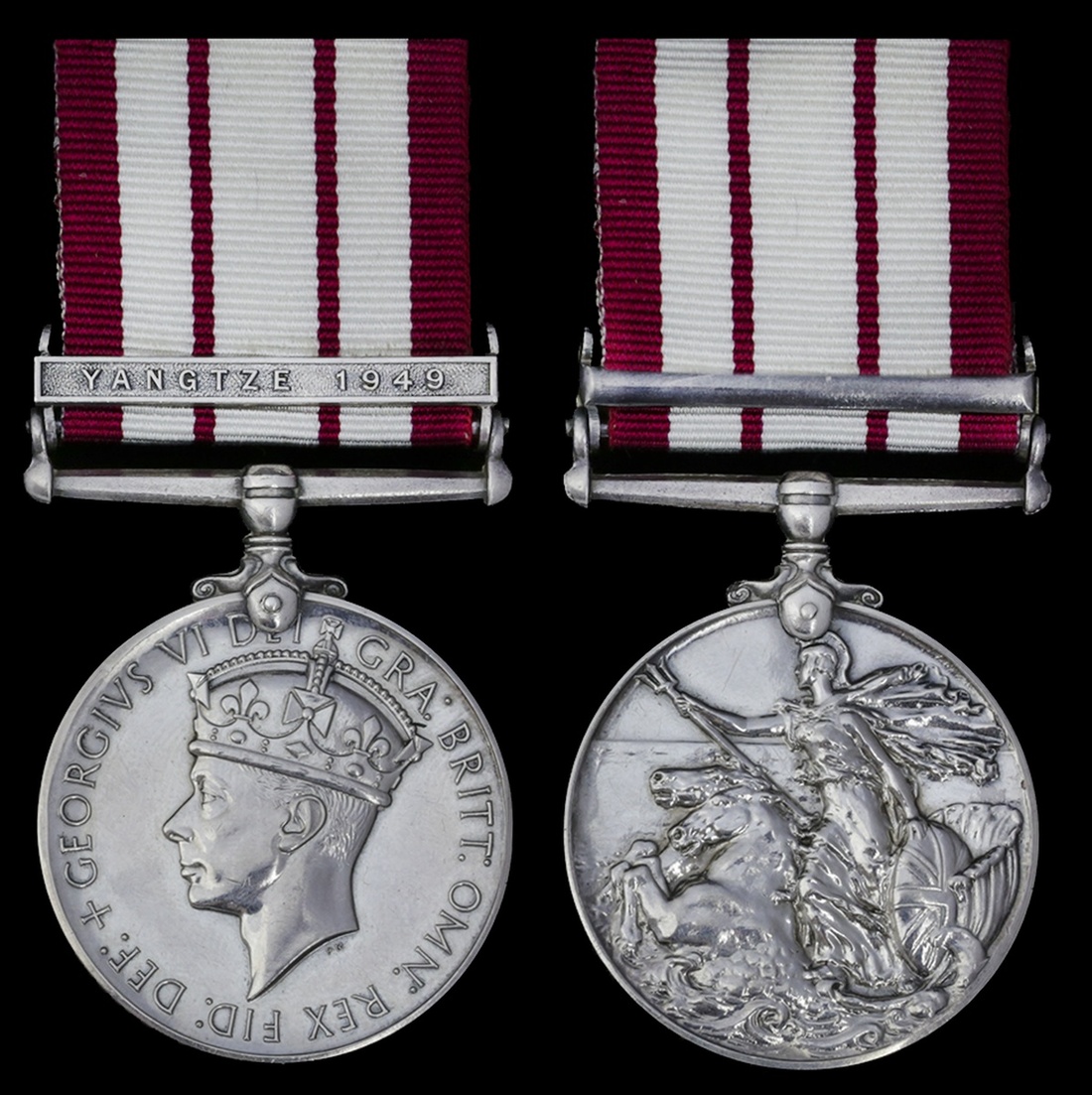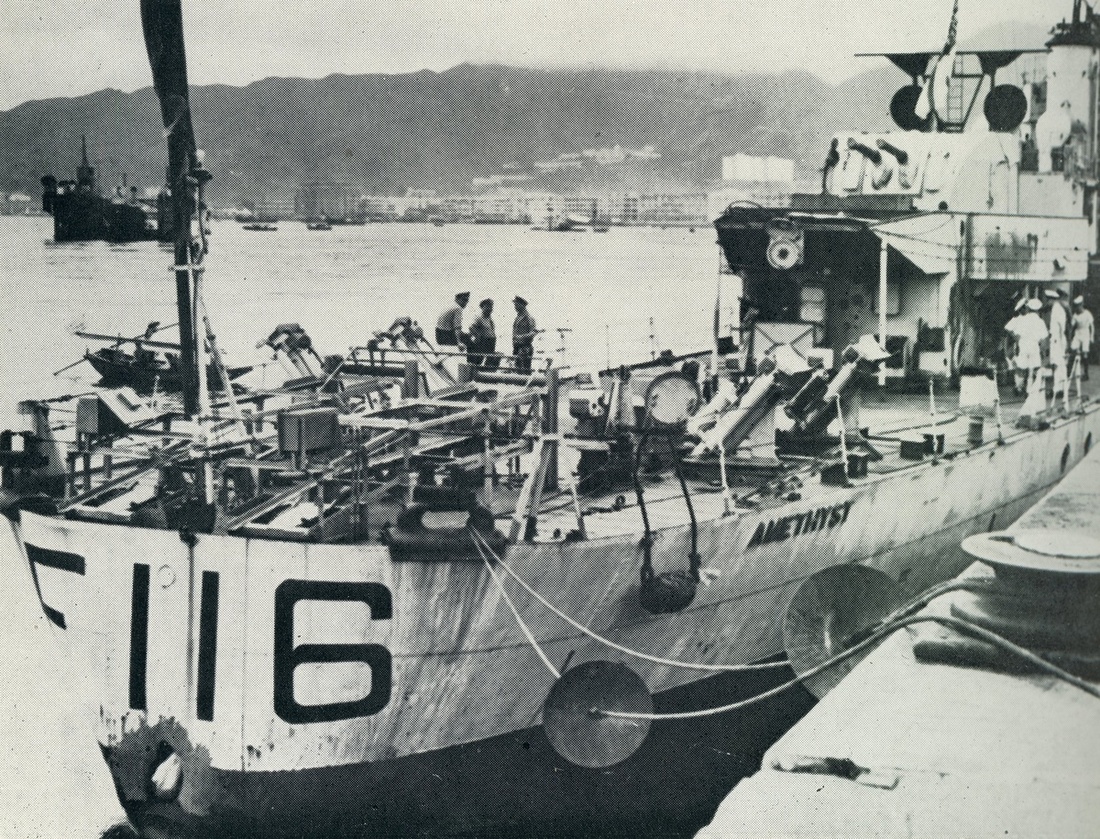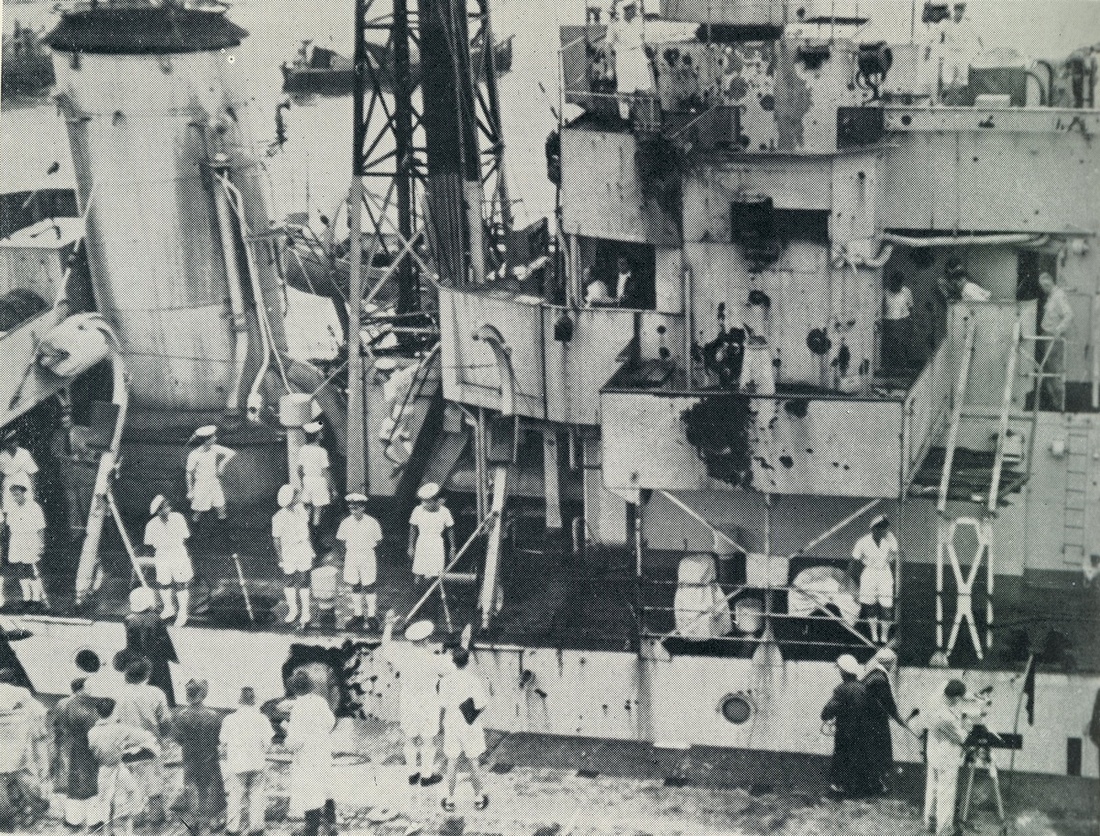Auction: 19001 - Orders, Decorations and Medals
Lot: 490
THE 'YANGTZE INCIDENT' - 70 YEARS ON
INTRODUCTION
'Have rejoined the Fleet south of Woo Sung. No damage or casualties. God Save the King.'
Lieutenant-Commander J. S. Kerans, R.N., H.M.S. Amethyst.
'Welcome back to the Fleet … Your bearing in adversity and your daring passage tonight will be epic in the history of the Navy.'
Admiral Sir Patrick Brind, C.-in-C. Far East Fleet.
The succinct - yet sublime - signal sent by Lieutenant-Commander J. S. Kerans, the captain of H.M.S. Amethyst, following his ship's epic escape from the grasp and guns of the Chinese People's Liberation Army in July 1949, has indeed embedded itself in the annals of the Royal Navy.
Most welcome of all, however, was the message sent to the C.-in-C. by H.M. King George VI:
'Please convey to the commanding officer and ship's company of H.M.S. Amethyst my hearty congratulations on their daring exploit to rejoin the Fleet. The courage, skill and determination shown by all on board have my highest commendation. Splice the mainbrace.'
Transmitted seventy years ago, these historic signals marked the conclusion of what became known as the 'Yangtze Incident', an incident in which the Royal Navy won the attention - and admiration - of the free world. Total casualties amounted to three officers and 43 men killed and seven officers and 87 men wounded, the Royal Navy's greatest loss of life during peacetime operations.
The exploits of H.M.S. Amethyst have rightly found a place in the annals of the Royal Navy, for they epitomise the high standards of the Senior Service in the face of great adversity. Likewise, the exploits of Black Swan, Consort and London are worthy of high praise, all three ships making plucky attempts to come to the rescue; just how plucky may be gleaned from their casualty returns.
The debate held in the House of Lords on 26 April 1949 lent not just to an abiding sense of gravity and concern but, in equal measure, to the immense respect afforded those officers and ratings who had displayed such remarkable fortitude under such challenging circumstances. Here, then, the foundations of a story that led to wider acclaim:
https://api.parliament.uk/historic-hansard/lords/1949/apr/26/the-yangtse-incident
That such a small-scale, post-war incident resulted in media coverage on an unprecedented scale is surely a mark of equal esteem, albeit under an umbrella of trying international relationships. The conduct of all those personnel ensnared in the gunsights of a belligerent communist opponent - an enemy blessed with the advantages of armament and surroundings and devoid of the usual rules of conflict - was indeed sublime.
And so, 70 years on, by means of this collection, we are pleased to pay homage to their gallant deeds and sacrifice. We won't be the first - countless articles and books, and the film Yangtse Incident, starring Richard Todd, precede us. Nor will we be the last, for their inspirational example must surely be timeless.
H.M.S. Amethyst
20 April to 31 July 1949
Casualties: 21 killed or died of wounds and 31 wounded
The Naval General Service Medal awarded to Boy K. J. Morton, Royal Navy: one of the youngest members of H.M.S. Amethyst's crew at the time of the incident in April 1949, he survived - under a murderous fire - the crossing to Rose Island
Naval General Service 1915-62, 1 clasp, Yangtze 1949 (D/JX 836312 K. J. Morton, Boy. R.N.), mounted as worn, extremely fine
Kenneth John Morton (1931-2005), a native of North Bovey, Devon, entered the Royal Navy as a boy rating at the training establishment Ganges in July 1947 and first went to sea in the cruiser H.M.S. Norfolk.
By early 1949, he was serving in H.M.S. Amethyst, as a consequence of which he was present on the occasion when Chinese Communist forces opened fire on her on the Yangtze on 20 April that year.
He was one of 59 of the ship's company subsequently evacuated - under a murderous fire - to Rose Island. C. E. Lucas Philips takes up the story in Escape of the Amethyst:
'The Communists now turned cold-bloodedly on the men who were evacuating. On the whaler, the rafts and the men in the water they turned not only their artillery but their machine-guns and rifles also, like a German submarine machine-gunning the men from a ship that it has torpedoed. Able Seaman Sinnot, one of the ship's best athletes, lying wounded in the whaler, hit already in the wheelhouse, was again hit, mortally. Two were hit in the water and downed. Aubrey, the laughing C.P.O. Stoker Mechanic, unable to swim, was also drowned or shot, supported to the last possible moment by a gallant shipmate. At 10.45 a.m., in an effort to stop the barbarity, someone - it is not clear who - ordered a sheet to be hoisted as a white flag, but the Communists took not the slightest notice and continued to rake the shallow waters and the shore. Realising its futility, and fearing that it might be taken as a sign of surrender and an invitation to board, Berger had the sheet hauled down.
So hot was the fire, indeed, that Berger quickly appreciated that an even greater loss of life might be incurred in continuing the evacuation than in staying in the ship, and he therefore stopped all further evacuation. The previous order had in any case not reached all in the ship and there were few, if any, who would not have preferred to stay at all costs. Those who went did so because they were ordered.'
Morton and his fellow evacuees subsequently made their way cross-country to Shanghai. On arrival, he was admitted to hospital with a complaint believed to have been contracted during his time in the water of the Yangtze.
He was later repatriated to Hong Kong, where he rejoined the Amethyst after her famous escape at the end of July 1949. Back in London, Morton participated in the ensuing celebrations, marching through the streets of the capital and attending the official dinner held at the Dorchester on 16 November 1949. He is also credited with caring for 'Simon' the ship's cat, a unique feline recipient of the Dickin Medal.
He retired from the Royal Navy in March 1957.
Subject to 20% VAT on Buyer’s Premium. For more information please view Terms and Conditions for Buyers.
Sold for
£1,900











